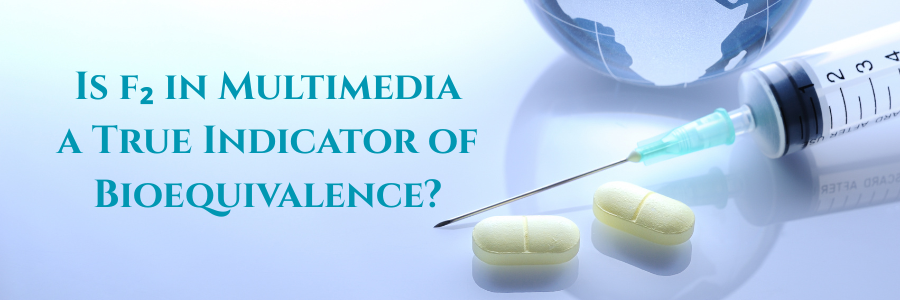The f₂ similarity factor is a commonly used mathematical tool in pharmaceutical development to compare the dissolution profiles of a test product and its reference listed drug (RLD). When the calculated f₂ value is ≥ 50, it indicates that the two profiles are similar under the tested conditions. Regulatory agencies such as the USFDA, EMA, and WHO accept this threshold as a valid measure of similarity, but only within certain boundaries—typically in a single dissolution medium under controlled conditions.
Purpose of f₂ in Multimedia Testing
When dissolution testing is extended to multiple media (commonly pH 1.2, 4.5, and 6.8), the goal is to mimic the changing pH environments of the human gastrointestinal (GI) tract. A consistent f₂ value across these media suggests that the formulation maintains similar release behavior under varying pH conditions, which supports the robustness of the dosage form. However, this practice—while scientifically meaningful—still remains an in vitro assessment. It does not reflect how the drug is absorbed and metabolized in vivo.
Limitations of f₂ as a BE Surrogate
While f₂ across multiple media can indicate formulation robustness, it is not a definitive indicator of bioequivalence. Bioequivalence is a clinical concept that reflects the rate and extent of drug absorption, which is influenced by many physiological factors. These include gastrointestinal motility, enzyme activity, permeability, food effects, and first-pass metabolism—none of which are captured in a dissolution test. This is especially critical for BCS Class II or IV drugs, where solubility or permeability may limit absorption. In such cases, even if f₂ shows similarity in dissolution, it cannot predict systemic exposure or clinical performance.
When f₂ Can Be Supportive?
f₂ in multimedia can still play a significant role in regulatory submissions and formulation development. It is useful when supporting post-approval changes, site transfers, or formulation modifications. Moreover, for drugs classified as BCS Class I or III (high solubility, high or low permeability), f₂ values in multimedia can be used to support biowaiver applications, provided all other regulatory criteria are met. Even then, regulatory agencies require comprehensive justifications beyond f₂ data alone.
Conclusion
In conclusion, f₂ in multimedia should be viewed as a supportive, not definitive, indicator of bioequivalence. It provides valuable insights into the consistency of drug release across varying pH environments, but it does not account for complex human physiological variables that affect drug absorption and metabolism. Therefore, unless biowaiver conditions are clearly fulfilled, an in vivo bioequivalence study remains essential to truly establish therapeutic equivalence between the test and reference products.
Read also:
- The f2 Similarity Factor in Dissolution
- Handling High RSD at Early Time Points in Dissolution Profiling
Resource Person: Moinuddin Syed. Ph.D, PMP®

